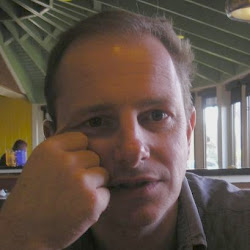Early i.In the Twenty First Century, A Zed and Two Noughts comes across as the period piece it is; relentlessly 80s in its look, it’s self-consciously post-modern in a way that was very fashionable back then, when loose combinations of unlikely themes and images combined to make interesting melanges that were both intellectual and visual — visceral, the critics would probably have said. Certainly, it was very post-modern in 1986 to cast Jim Davidson, a comic known for being frequently racist, sexist and homophobic in an art-house production, and although he is good enough to act (just) you’d have to wonder at the logic of his appearance, other than for the director’s own sake. It’s the sort of cleverness that can only backfire, although at least Davidson wasn’t encouraged to perform any of his ‘impressions’.
Unfortunately for the casual viewer, there may be few reasons left to watch A Zed and Two Noughts, unless you are a Greenaway fan or especially interested in British 80s cinema. Greenaway doesn’t have the necessary vitality that Derek Jarmann had, although he has his own missions, and always created very distinct pieces, in a cinematic language he partly dreamed up himself, with the help of Baroque and Renaissance art which he plies in his imagery wherever he can.
A Zed and Two Noughts has no lesser theme than mortality itself, cramming in as it does repeated visions of physical decay and lectures on the evolution of life itself. What that life has evolved into here are the sort of cruel and narcissistic bunch that have appeared in other Greenaway productions. Greenaway’s world is comfortably art-house, and his films are instantly recognisable, often due to Michael Nyman’s music. There is a perpetual unreal quality to A Zed and Two Noughts , usually generated from the lighting or set decoration, and as in other Greenaway productions, the emotional backdrop to this is the suggestion of sexual anxiety, transformed into whatever the perversity of the day is.
Add to this constant references to Vermeer that are not entirely clear and the mix is about complete, although you may be surprised that this is one of his more accessible and recommended works. There are many people who switched off during the viewing of a A Zed and Two Noughts however, because watching it is a little like being a packhorse that become overloaded. Perhaps the story line about the orthopaedic surgeon named Van Meegeren who stages exact scenes from Vermeer paintings in order to paint copies of them, was the excess that I could not be bothered with; and maybe it is something for Greenaway himself. Vermeer’s portrayal of light would certainly be a draw for any cinematographer, although as I say it was hard for me to say what it added to the movie.
Andréa Ferréol is mostly seen in the first half of the film in the middle of a bed, between two twins, decorating a meticulously set camera shot, and it’s this sort of thing that gives the film its true shape. Of all the actors in A Zed and Two Noughts, it’s Andréa Ferréol that’s static (as in a painting) and it’s Andréa Ferréol that gives the film the human aspect of its ultimate look, something both repulsive and beautiful; in this case the amputee. Joss Ackland and Jim Davidson are there too, although the best, the hardest and the cruellest comedy belongs to Belgian actress Guusje van Tilborgh, who seems to fit the cold and hard-faced sexual backdrop of the film to a tee.
